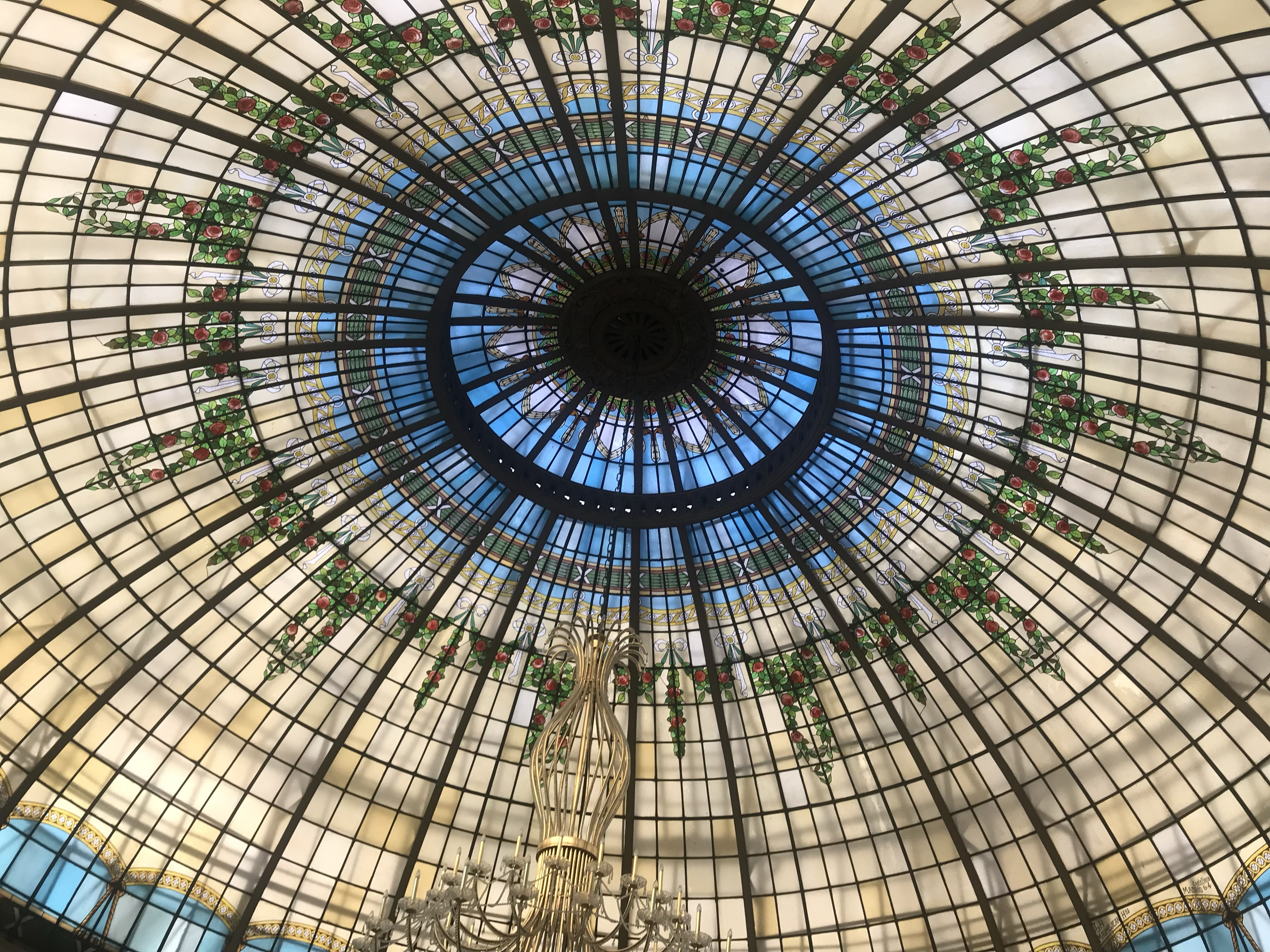As a traveler, most of my attention to hotels has been focused on location and luxury. If I’m not sleeping in my own bed, I want a place that’s comfortable and clean and situated in a spot both convenient and fun. My precise and particular taste means finding a hotel takes a lot of energy and effort when planning a trip.
But what I haven’t thought much about until recently is the potential for a hotel to have a magic beyond its ability to accommodate my creature comforts —that the hotel itself can be an integral part of my exploration of a city.
I unexpectedly discovered this last month while staying at The Westin Palace Madrid – a hotel whose story is woven into the fabric of Madrid’s history.
I was awe-struck the moment we pulled up to its entrance. The hotel looks regal standing across from a beautiful flowing fountain in the Barrio de Las Letras district of Madrid, just a hop, skip and jump to the Spanish Parliament, Reina Sofia, The Prado, Thyssen-Bornemisza, and my personal favorite, El Retiro Park.
Stepping inside the hotel, my awe increased with the sight of the soaring ceilings, stunning chandeliers, and gorgeous stained-glass rotunda. My curiosity was peaked and I knew I had to find out more about this magnificent place.

Lucky for me, I was fortunate to have an opportunity to sit down with Paloma Garcia Gaxa, the Public Relations Manager, who has been with The Westin Palace Hotel for 25 years (long before it became a Westin!) and generously shared its rich history with me.
The Westin Palace Hotel, originally The Palace Hotel, was built in 1912 as an initiative of King Alfonso XIII. When it opened, it was the largest and most modern hotel in Europe. It was the first hotel in Spain, and only the second in the world, to have a private bathroom in each guest room!
The original intention for the creation of the hotel was not only to provide a place for tourists to stay but also to become a central meeting place for the growing city of Madrid’s social life. It was obvious from my brief stay that the hotel had actualized this intention, as during my stay I saw high profile politicians meeting and speaking, a global cosmetics brand setting up for an event, and felt a buzzy this-is-where-the-action-is energy.
Garcia Gaxa shared that during the 1920s, the Madrid social scene took off with the likes of Salvador Dali and Federico Garcia Lorca frequenting the hotel bar. Over the years, Garcia Gaxa told me, the hotel has attracted a steady flow of famous guests, from Marie Curie, Pablo Picasso, Ernest Hemingway and these days, Antonio Banderas. I saw the guest registration book with Picasso’s signature in their 1912 Museo Bar, which boasts a treasure trove of the hotel’s history—from old photos to the silver glasses toasted by King Alfonso XII and Queen Victoria Eugenia.
During the Spanish Civil War, Garcia Gaxa explained, the hotel became a military hospital and La Rotunda, where breakfast is served every morning, became an operating room during regular blackouts due to the abundance of light made available by the stained glass windows.
For a few months in 1972, an entire floor of the hotel became the Chinese Embassy.
In 2001, the hotel was closed for three days while 40 heads of state – including Bill Clinton and Mikhail Gorbachov – attended the International Summit. Clearly, this was much more than just a hotel, but rather a building steeped in its own deep and rich history.
Currently, the hotel is undergoing massive renovations, and has just completed what Garcia Gaxa calls “the jewel in the crown”: the regal Royal Suite.
By the end of our trip I felt I had a more expansive understanding of this incredible city through the history of our hotel. I might just have made my future hotel searches much harder, but my travel adventures going forward will be much more meaningful.


